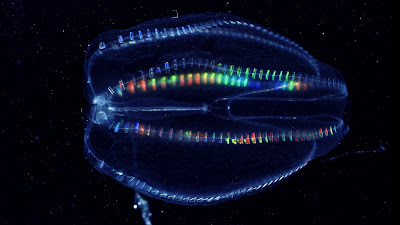 Steeped in mist and mythology, the islands of the Queen Charlottes abound in local lore that surrounds their beginnings.
Steeped in mist and mythology, the islands of the Queen Charlottes abound in local lore that surrounds their beginnings. Today, the Hecate Strait is a tempestuous 40-mile wide channel that separates the mist-shrouded archipelago of Haida Gwaii from the BC mainland. Haida oral tradition tells of a time when the strait was mostly dry, dotted here and there with lakes. During the last ice age, glaciers locked up so much water that the sea level was hundreds of feet lower than it is today. Soil samples from the sea floor contain wood, pollen, and other terrestrial plant materials that tell of a tundra-like environment.
The court is still out on whether or not the strait was ever completely dry during these times, but it certainly contained a series of stepping-stone islands and bridges that remained free of ice.
An ancient Haida tale, recorded in the late 1800s by a Hudson’s Bay Company trader, records the island's glacial history. Scannah-gan-nuncus, a boy who lived in the village now called Skidegate, had canoed up the Hunnah, a once roaring tributary to Skidegate Channel that is now a rocky creek, seldom deep enough to navigate.
The Haida the legend accurately records that it used to be several times deeper. Tired from paddling upstream, Scannah-gan-nuncus landed to take a nap. “In those days at the place where he went ashore were large boulders in the bed of the stream, while on both sides of the river were many trees. While resting by the river, he heard a dreadful noise upstream. Looking to see what it was, he was surprised to behold all the stones in the river coming toward him. … all the trees were cracking and groaning … he went to see what was crushing the stones and breaking the trees. On reaching them, he found that a large body of ice was coming down, pushing everything before it.”
Scannah-gan-nuncus’ experience with the glacier would have been familiar to the inhabitants of the Queen Charlottes. In recent years, the highest peaks are often bare of vegetation and snow-covered during most of the year, but back in the time of the glaciers, these same local mountains were the birthplace of advancing ice.
Precipitation and a significant drop in temperature gave rise to the Queen Charlottes ice-sheet, a thick mass of flowing ice that ran tandem with the Cordilleran sheet in the Hecate Lowlands.
Strolling around you can see where the glaciers left their mark on the Islands’ U-shape valleys, once a steep V-shape, now scoured smooth by glaciers that also deposited the erratic boulders can been seen sitting like sentinels on the beach.























